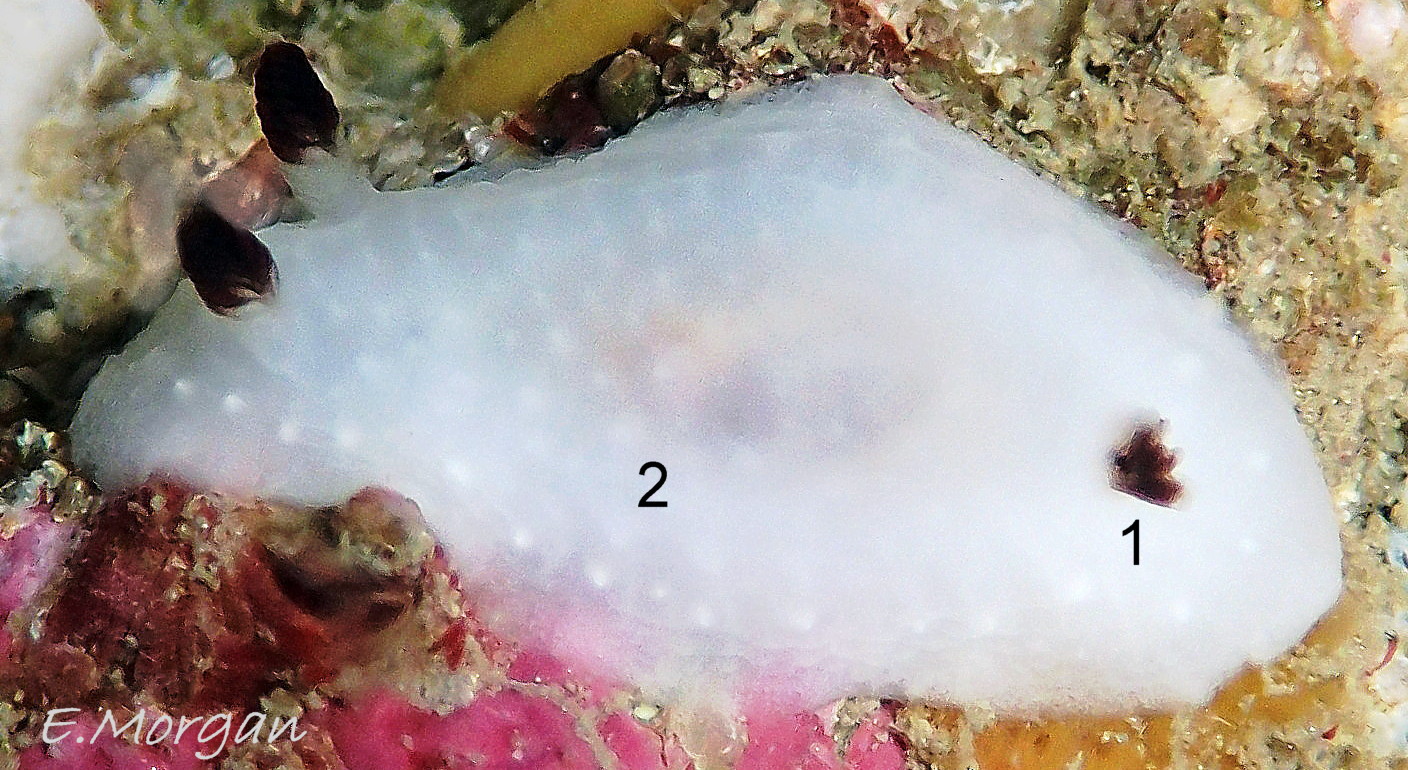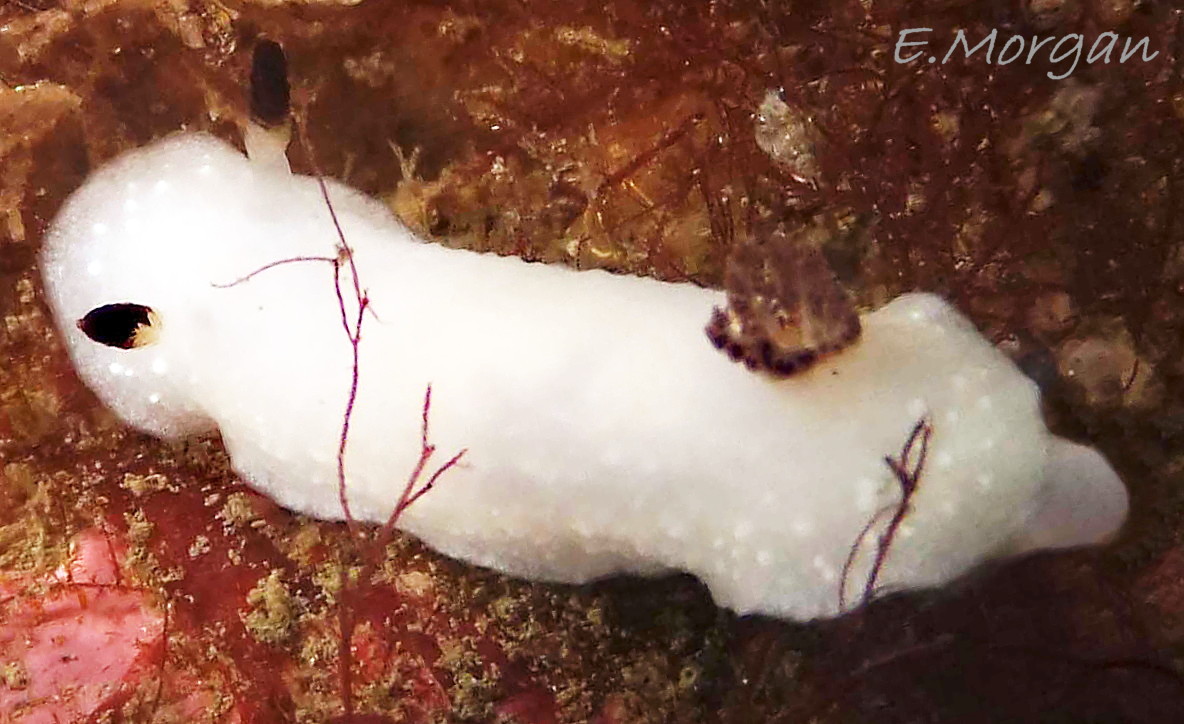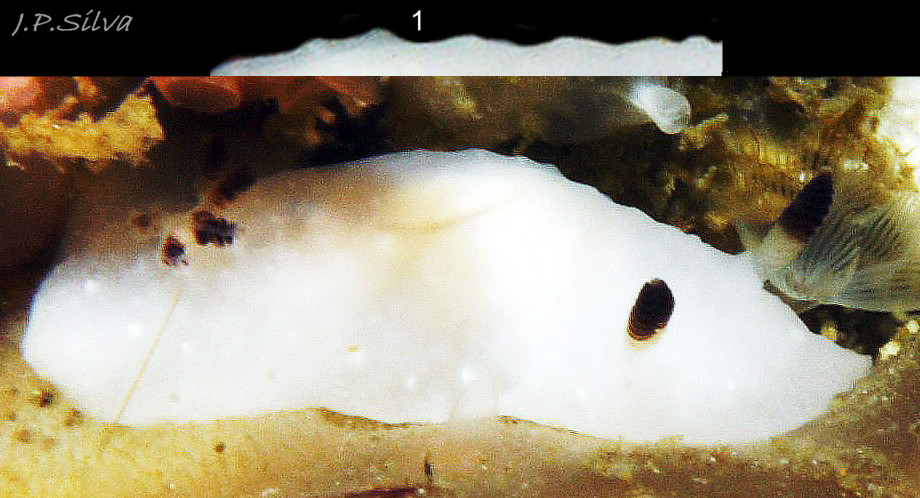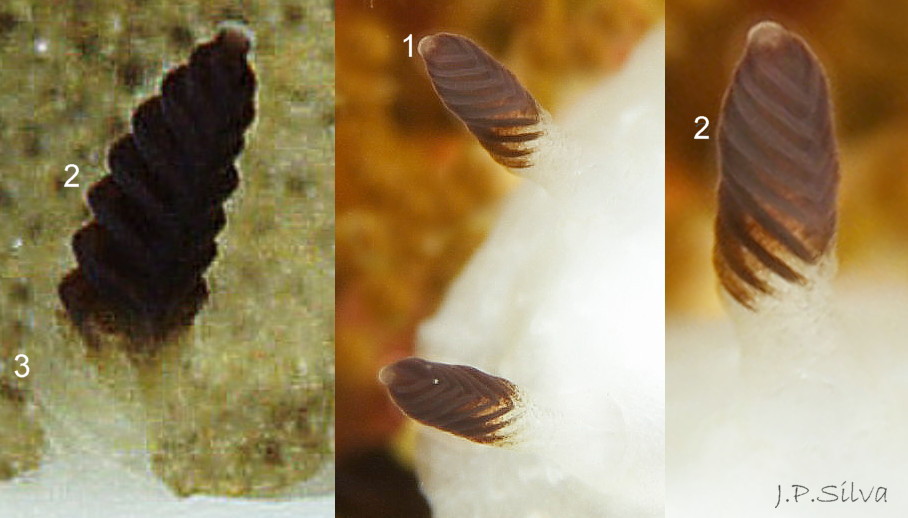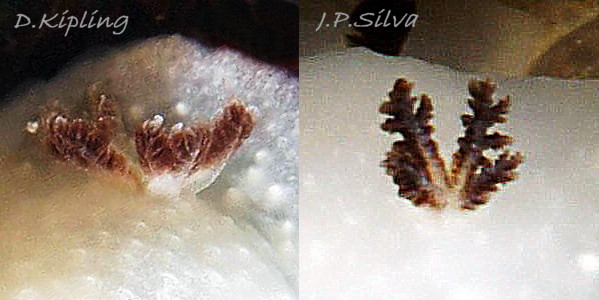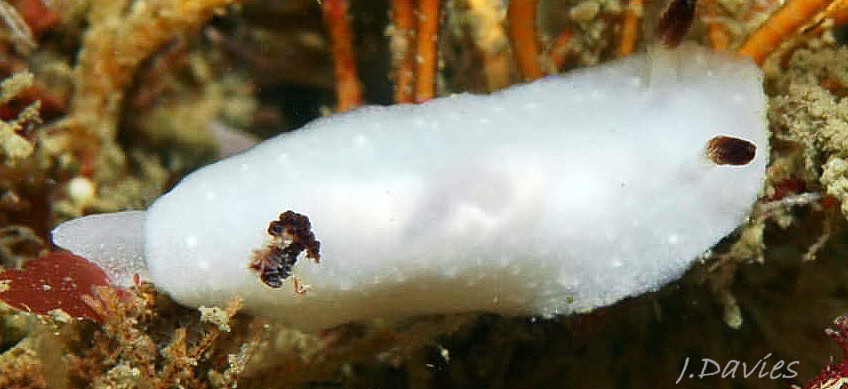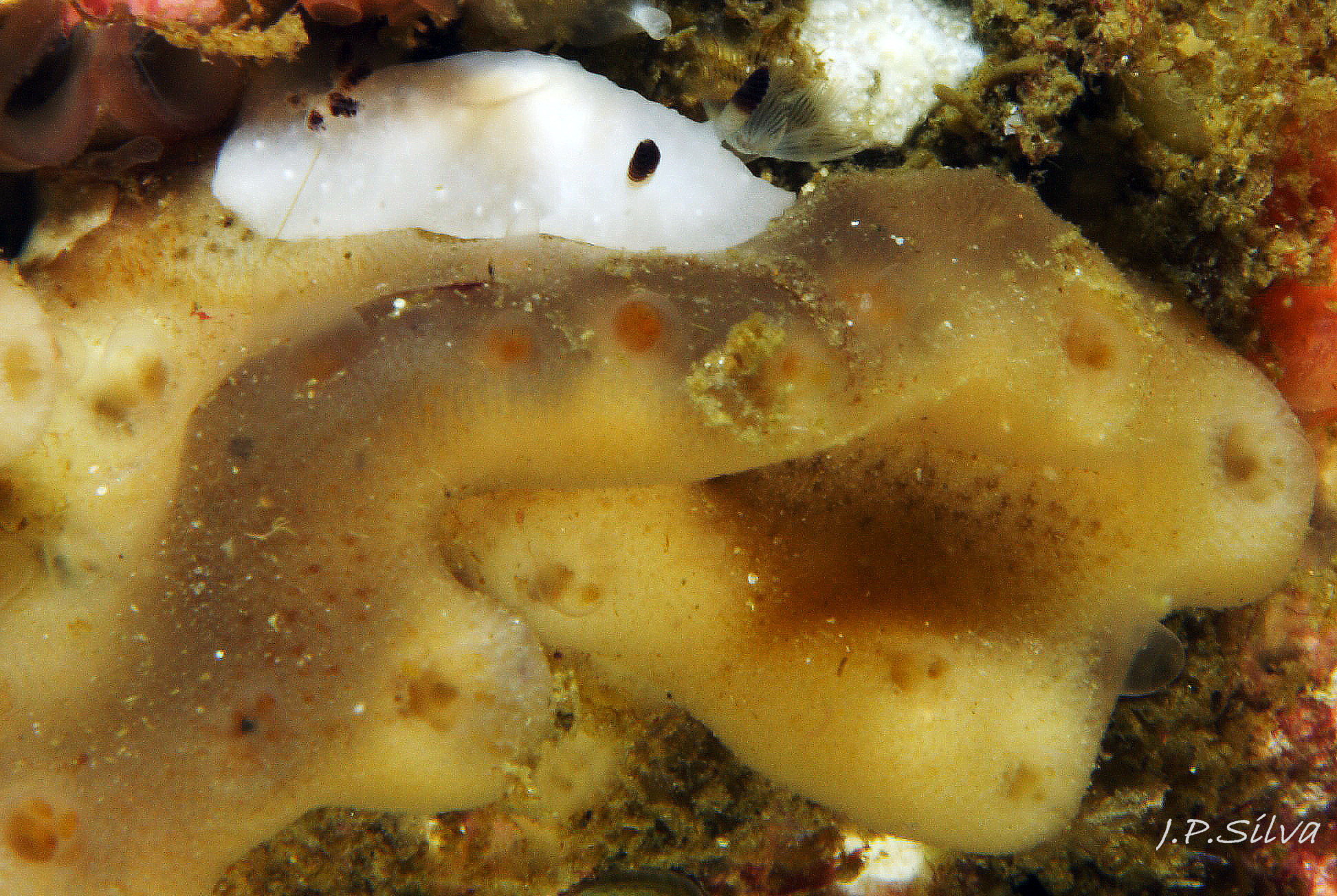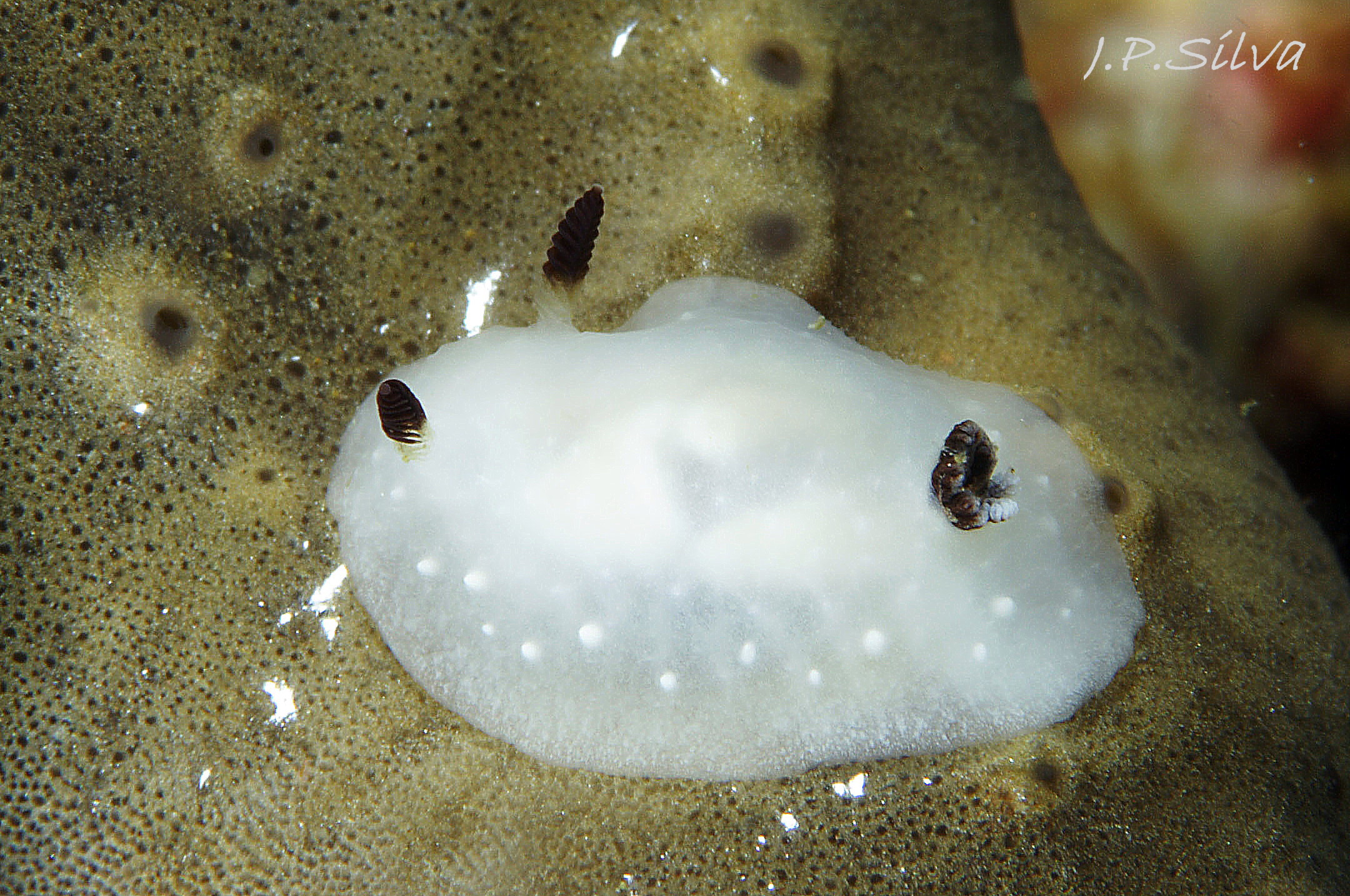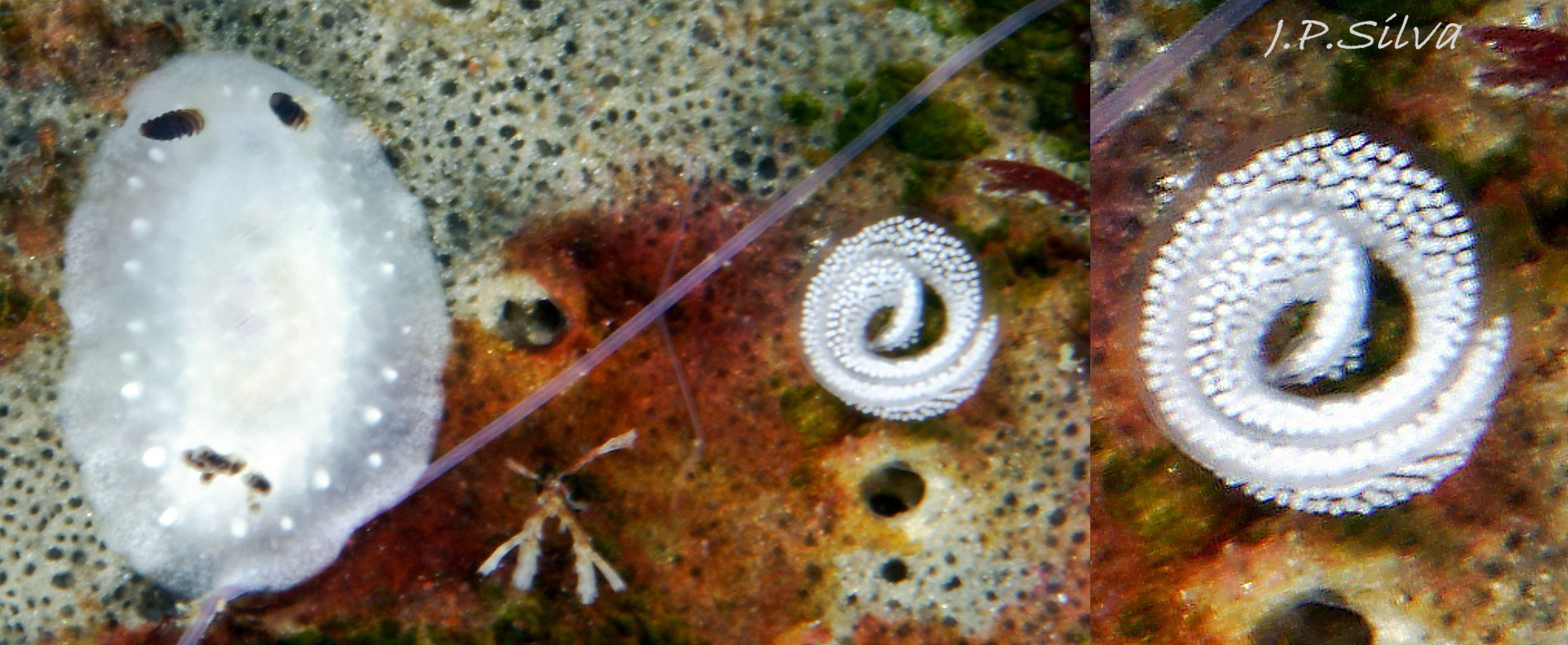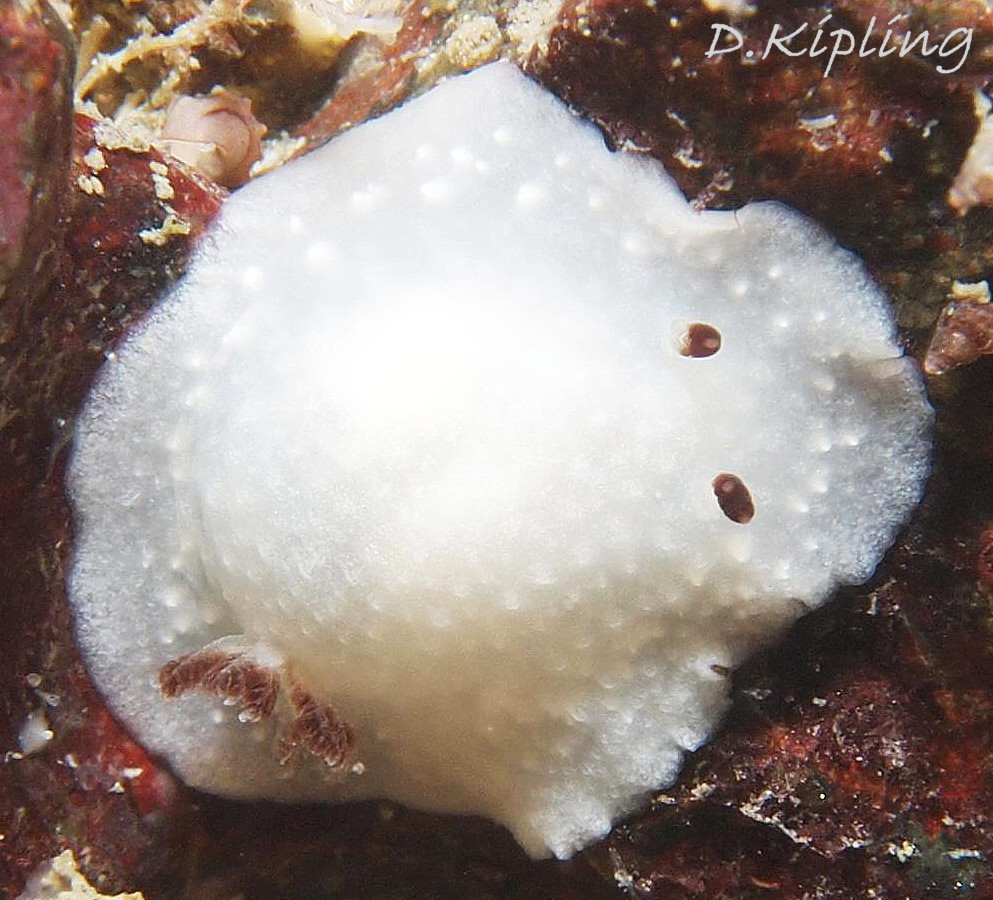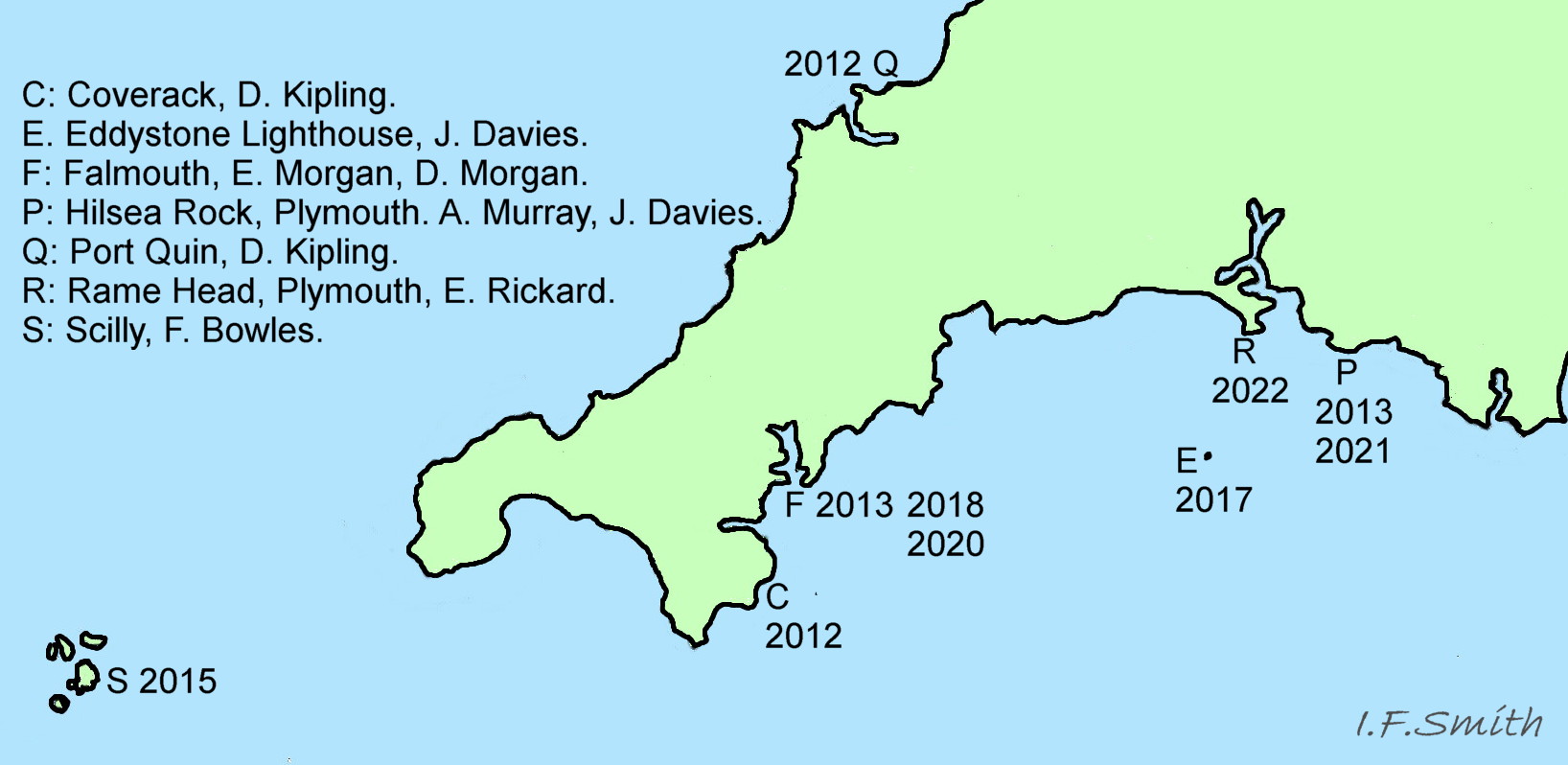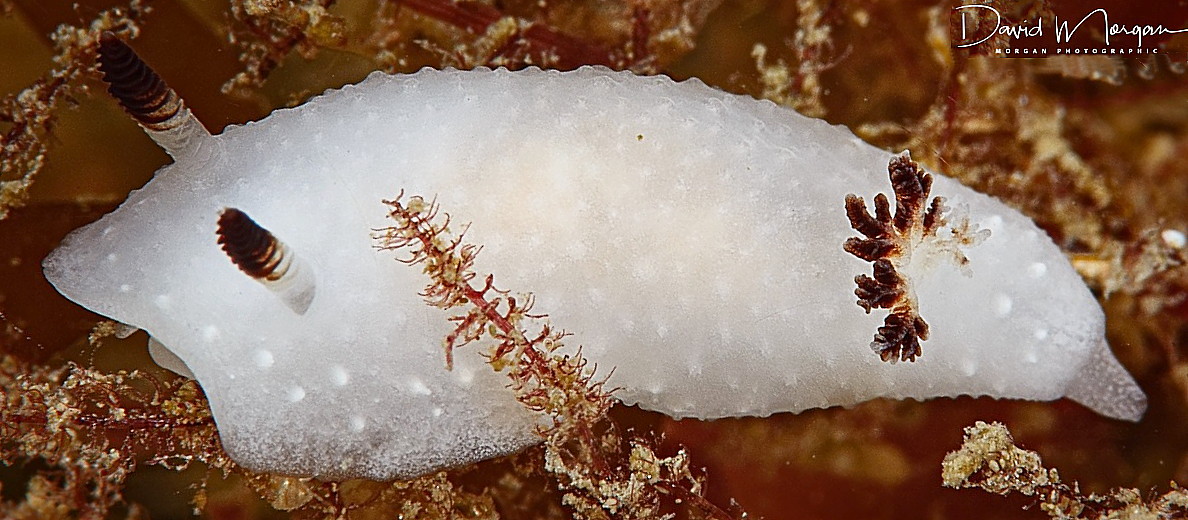Click image to enlarge with full caption. Main text below slider.
Cadlina pellucida (Risso, 1826).
Authors: Ian Frank Smith (text) and João Pedro Silva (fieldwork and images).
PDF available at www.researchgate.net/publication/359894688_Cadlina_pelluc…
Current taxonomy: World Register of Marine Species www.marinespecies.org/aphia.php?p=taxdetails&id=139135
Synonyms: Doris pellucida Risso, 1826; Cadlina clarae Ihering, 1880.
GLOSSARY BELOW
Description
In Portugal and France, Cadlina pellucida usually grows to 10 mm long, occasionally 20 mm or 30 mm extreme maximum. It has a low profile and, from above, has an elliptical outline 01 Cadlina pellucida which can elongate greatly to a thin oblong with rounded ends 02 Cadlina pellucida . The ample, white mantle covers the whole body. The colour of internal viscera is often visible through the translucent body 01 Cadlina pellucida . The mantle is covered with small, very low, translucent tubercles, which are inconspicuous, even in profile 03 Cadlina pellucida . There is an irregular line of larger, opaque, white tubercles, possibly repugnatory defensive glands, around the mantle skirt 04 Cadlina pellucida .The rhinophores have a small whitish apex, a white stem and seven to nine dark chocolate brown, occasionally reddish brown or almost black, lamellae on the upper part with two or three difficult-to-discern translucent white lamellae below the brown ones 05 Cadlina pellucida . The gills have four to seven partially bipinnate plumes, with a stout, main rib, short stout branches and short pinnae 06 Cadlina pellucida . The gills have a sparse overall appearance when expanded and the dark brown plumes look unconnected because the main stems are white and unobtrusive basally 04 Cadlina pellucida . The gills can contract 07 Cadlina pellucida or retract completely 01 Cadlina pellucida .
The posterior of the foot protrudes from under the mantle when the animal is in motion. Dorsally it is translucent with small, opaque white spots 04 Cadlina pellucida & 07 Cadlina pellucida .
Key identification features
Cadlina pellucida
1) Low profile, soft, translucent, white body.
2) Small inconspicuous tubercles on mantle with larger, opaque white tubercles around mantle skirt 04 Cadlina pellucida .
3) Rhinophores 05 Cadlina pellucida and gills 06 Cadlina pellucidadark brown.
4) Southern species which since 2012 has extended its range to Cornwall and Devon in England. All records known to IFS are sublittoral.
Similar species
Cadlina laevis (Linnaeus, 1767). 08 Cadlina pellucida
Samples of C. laevis with very varied appearance from Russia, Scandinavia and Ireland had identical CO1 sequences (Korshunova et al., 2020).
1) Low profile, soft, translucent, white body, sometimes tinted yellow.
2) Mantle has small, inconspicuous tubercles, sometimes larger, yellow and conspicuous, with larger, opaque chalk-white or lemon-yellow glands around mantle skirt.
3) Rhinophores and gills white.
4) Northern species which extends to northern Iberia. Littoral and sublittoral in northern Europe, usually sublittoral in southern Britain and further south.
Habits and ecology
C. pellucida lives in the shallow sublittoral to 50 m, possibly deeper. It feeds on sponges; possibly Spongia lamella, Dysidea sp . and Sycon sp. (Sohier et al. 2021). Portuguese specimens are often found on an unidentified greyish-yellow species 09 Cadlina pellucida & 10 Cadlina pellucida . Like other nudibranchs, it is a simultaneous hermaphrodite. A ribbon of spawn is attached to the substrate by its edge in a spiral of about 2½ turns, in August in Portugal 11 Cadlina pellucida . The small ova are packed about seven abreast across the ribbon. They hatch as veliger larvae, living in the plankton until settling and metamorphosing. The similar spawn of its northern relative, C. laevis, has fewer, larger ova as the veliger stage is passed within the spawn.
Distribution and status
C. pellucida occurs along the Mediterranean coast of Spain and France, and along the Atlantic coast of Iberia. It has been in Brittany, France at least since 2002 (Poddubetskaia, 2002). GBIF map www.gbif.org/species/4360061 . It extended its distribution to Cornwall, England where it was first recorded in 2012 12 Cadlina pellucida and became established there and in Devon in the subsequent decade 13 Cadlina pellucida . It is sometimes locally common. UK map NBN species.nbnatlas.org/species/NHMSYS0021056208
Acknowledgements
I thank my co-author, João Pedro Silva, for use of Portuguese images. Divers, mainly in the Seasearch Programme overseen by the Marine Conservation Society www.seasearch.org.uk/ , have recorded the establishment of C. pellucida in south-west England. I thank the following for data and/or images of U.K. specimens of it and comparison images of C. laevis: Fiona Bowles, Jan Davies, Nicola Faulks, David Kipling, David Morgan, Emily Morgan, Tim Nicholson and Eddie Rickard. I thank Bernard Picton for information and literature.
References and links
Calado, G. & Silva, J.P. 2012. Lesmas do Mar do Algarve – Guia de Moluscos Opistobrânquios da Costa Sul de Portugal. Edições Subnauta, 164pp.
Calado, G. & Silva, J.P. 2012. Sea Slugs of the Algarve – Opisthobranch Guide for the Southern Coast of Portugal. Edições Subnauta, 164pp.
Korshunova, T., Fletcher, K., Picton, B., Lundin, K., Kashio, S., Sanamyan, N., Sanamyan, K., Padula, V., Schrödl, M. and Martynov, A. 2020 .The Emperor’s Cadlina, hidden diversity and gill cavity evolution: new insights for the taxonomy and phylogeny of dorid nudibranchs (Mollusca: Gastropoda). Zool. J. Linn. Soc., XX, 1–66. www.researchgate.net/publication/339399574_The_Emperor%27…
Poddubetskaia, M., 2002 (Sep 12) Cadlina pellucida from Brittany, France. [Message in] Sea Slug Forum. Australian Museum, Sydney. www.seaslugforum.net/showall/cadlpell
Sohier, S., Müller, Y. & Barrabes, M. 2021 in: DORIS , Cadlina pellucida (Risso, 1826), doris.ffessm.fr/ref/specie/2187
Glossary
bipinnate = twofold branching; boughs and branches, but no subsequent twigs; in one plane like a feather.
dorid = a sea slug in the infraorder Doridoidei; with gills and rhinophores on the dorsum; often shaped like half a lemon or grape.
hermaphrodite, simultaneous = individual acts as both male and female at the same time with similar partner(s).
lamellae = (of sea slugs) small plates on rhinophores or leaflets of gill.
mantle = (of nudibranchs) sheet of tissue forming part or all of notum (dorsal body surface).
pinna = (pl. pinnae) primary element/leaflet of a pinnate gill, leaf, feather etc.
plankton = animals and plants that drift in pelagic zone (main body of water).
rhinophore = chemo-receptor tentacle; many sea slugs have a pair on top of the head.
veliger = shelled larva of marine gastropod or bivalve mollusc which moves by action of cilia on a velum (bilobed flap). Stage may be passed in plankton or within liquid-filled egg-capsule.
